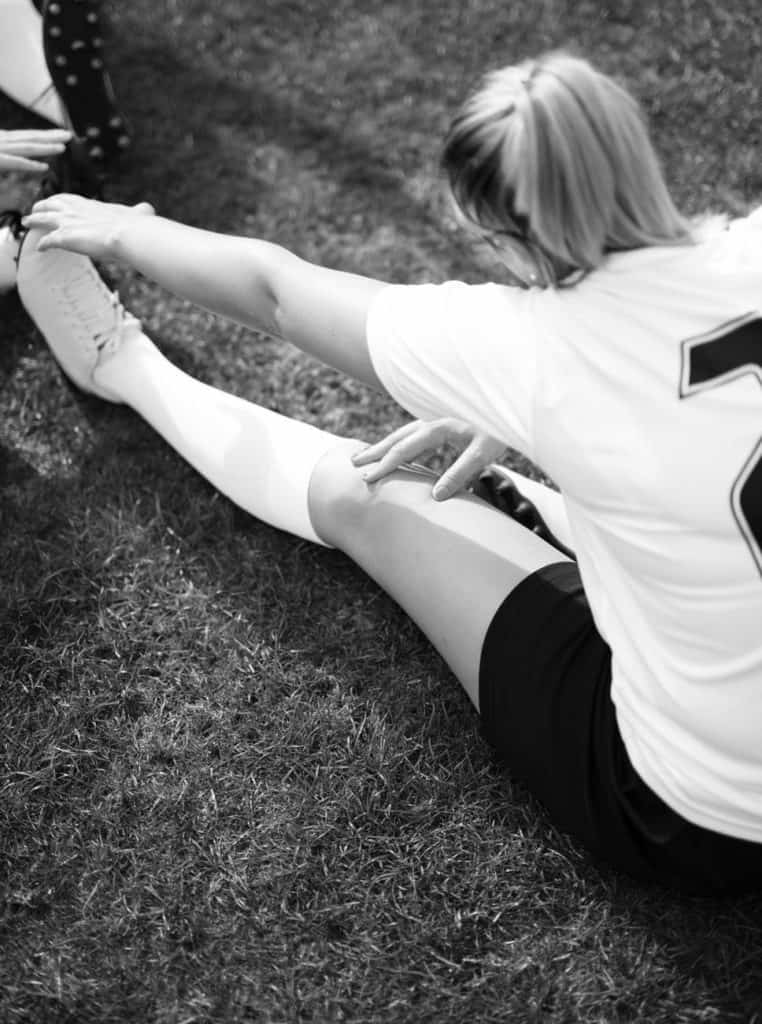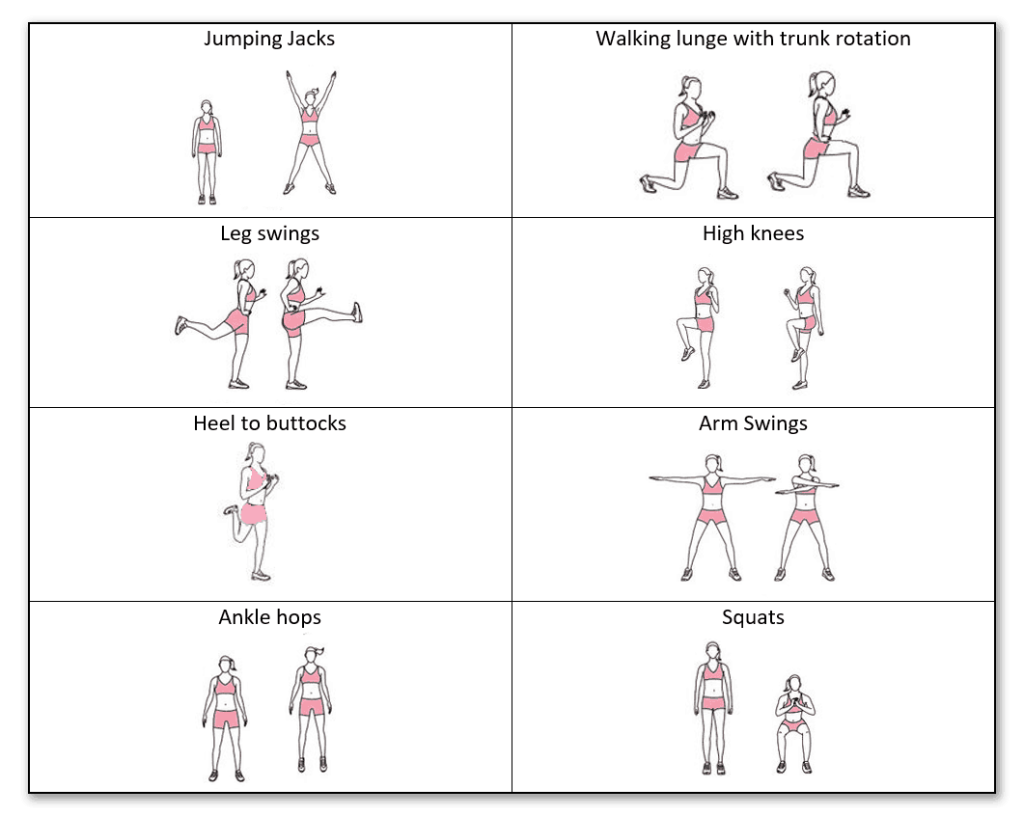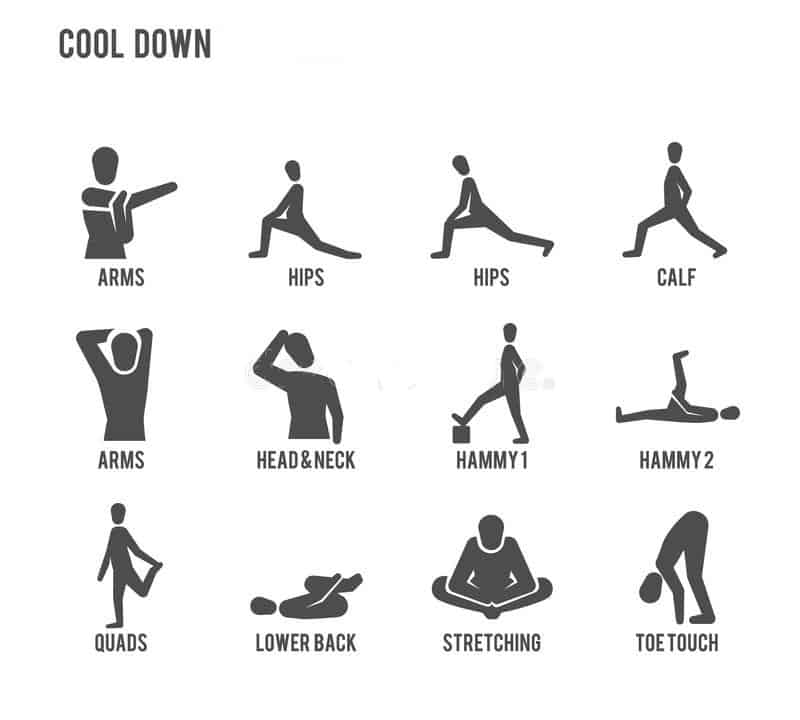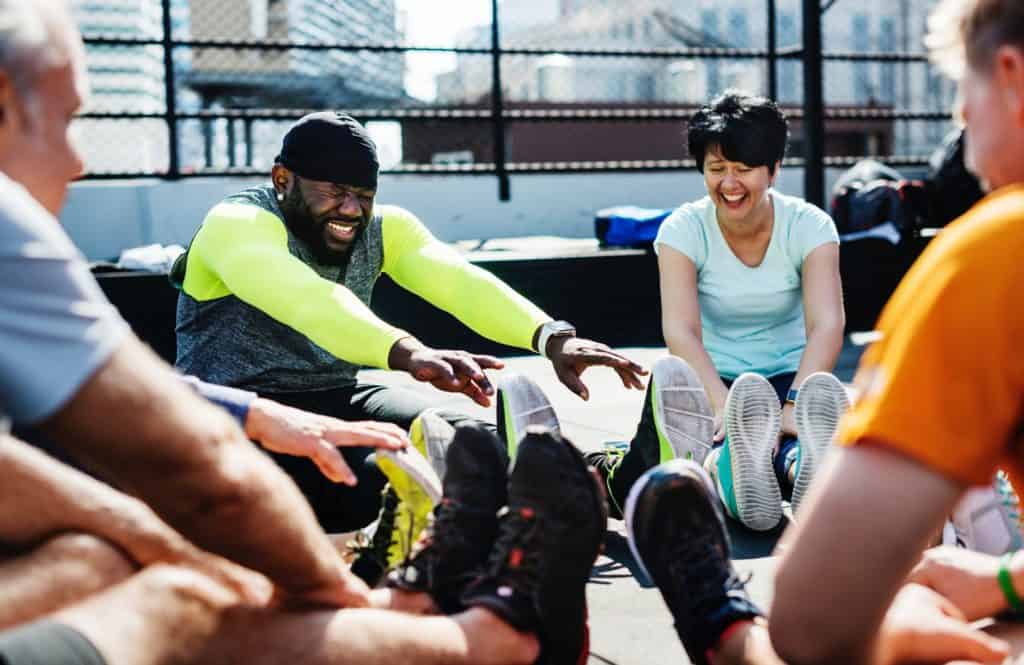Working out has a lot of great benefits. Bigger muscles, stronger heart, increased immune function, and, of course, the aesthetics. But, with those benefits come some extra side effects that aren’t always so much fun. The increased activity can cause you to have a lot of muscle soreness in the hours and days right after working out or reduce your overall range of motion in the long term. Plus, you could be reducing your overall gains without even knowing it. So, how do you avoid the vast majority of that easily?
Gym-rats, marathon runners, athletes, and the high school gym teacher you’re trying to forget about – they’ll all tell you the same thing. Stretch.
While it isn’t the most fun out there you cannot afford to skip it, and I’ll explain why.
Stretching Increases Mobility
When we exercise, we strain our muscles which creates tiny micro-tears in the them. That is the reason you feel sore after a good workout. Your body reacts by reinforcing the muscle, building it up so that it can be prepared for the next workout, which is how your muscles grow.

However, the more your muscles grow, the bulkier they become. Those muscles are also built to be much thicker and their range of motion can decrease without being stretched frequently.
Sadly, most of the really bulky people don’t stretch enough so their overall mobility suffers. Add in the linear, unnatural patterns of motion that most exercises follow and the results can be a dramatically decreased range of motion.
That is not the goal of fitness.
Ideally, we want fit, fluid muscles that allow both easy movement and a lot of strength. The two work in tandem, and one should never be neglected in lieu of the other. Stretching is the only way to lengthen those muscles, allowing your body to be both flexible and strong.
Stretching also helps break down scar tissue and keeps joints loose.
Decrease Soreness
A good workout leaves your muscles burning. That burn turns into soreness within a day or so. Soreness is part of the process, it’s normal, and it’s a great way to know that you are on the way to reaching your fitness goals.
It is caused by the tiny injuries to the muscle fibers caused by exercise. This soreness, known as delayed onset muscle soreness (DOMS), results as your body works to repair this damage. It is especially common when you start a new exercise routine or push yourself harder than usual.
A short stretching session can help increase blood flow through the area and flush out waste products; leading to a dramatic decrease in the pain you feel the day after. I won’t say you won’t be sore – you should feel a workout the next day – but it should be a satisfying sensation of accomplishment, not agony.
Sometimes, you might be feeling pain from really being injured. Chances are, though, that you just have really tight muscles and sore joints which can be fixed by stretching enough.
Reduces Risk of Injury
Lots of injuries can occur from heavy exercise conducted too-quickly-too-soon and without properly warming up. Without adding in some dynamic stretching ahead of the workout and slowly increasing your body temperature in the lead up to your workout, you could surprise the body and cause a tear of some painful sort.
Almost nothing sets back the progress you want to make like an injury will. Injuries lead to time on the couch, time away from reaching your fitness goals, and too much time spent dangerously close to that bowl of potato chips.
After a mild strain or sprain, the body reacts by tightening up to protect the injured area. You may have encountered that with a back injury that gets so stiff you can barely bend over for a few days.
The best way to stay safe and healthy while getting into shape is stretching which can minimize muscle soreness after working out.
Proper stretching combats the risk of injury by lengthening the tendons and ligaments that hold our joints in place. Longer ligaments and tendons provide more room for error while conducting an activity. More room for errors leads to fewer pulled muscles, torn ligaments, etc.
Incorporating flexibility into your workout routine keeps ligaments and tendons supple and mobile, reducing the chances of damage.
Maximize Flexibility: How to Stretch
Stretching doesn’t have to mean plopping down at the end of a gym session and trying to touch your toes (even though that is a good stretch). It doesn’t have to be lying in a full-split like that one person you see at the gym. It doesn’t even have to be swinging your arms around like an Olympic swimmer getting ready to hop in the pool.
Flexibility exists in all parts of a workout and can (read: SHOULD) be involved in every exercise we do, as well as a bit before and after.
Types of Stretching:
There are multiple ways to stretch, but only a few that work to make your joints and ligaments flexible. The two most common being dynamic stretching and static stretching.
Need some help?
Shape Success, Live Exceptionally
Hit that button, and get started today.
Dynamic Stretching:
Dynamic stretching is stretching through movement. Swinging, lunging and stepping are all types of dynamic warmups. Doing these types of stretches increases mobility as we move, and is great to stretch the little muscle groups around our joints that we often ignore.
Properly warming up involves gradually picking up movement and speed, not jumping straight into it. The keywords here are ‘gradually’ and ‘controlled.’ Both are necessary for a good warm up that involves movement.
You probably wouldn’t go from your chair after a few hours in the office to a full sprint without warming up your legs first. Don’t do it before lifting weights, either.

When:
Dynamic stretching is the best warm-up you could possibly do. By stretching as you move, your flexibility will increase as your heart-rate rises and your muscles wake-up! Choose an area (about 10 meters) and move back and forth doing walking lunges, squat jumps, leg kicks, arm swings – anything that extends your range of motion.
While dynamically stretching, never pause and hold a stretch for more than 5 seconds. These stretches shouldn’t “burn” the same way as static stretches will. You should feel a more gradual loosening up as you get further into it.
Dynamic stretching can also be added in-between sets, during your workout. Stretching the same area you are exercising keeps it mobile and lengthens muscles as you strengthen them.
Pros
- Dynamic stretching is easy to add into workouts. Using this as a warm-up and in rest periods between exercises, it adds almost no extra time to your session!
- Lengthens muscles and ligaments as you strengthen them
- Reduces chance of injury because you are warmed up before you go
Cons
- Dynamic stretching can be tiring. It’s tempting to take the easy way out and sit down to stretch.
- Dynamic stretching can feel silly. Dynamic stretching can feel awkward until you get into the swing of things.
- Takes longer to see changes in flexibility.
Examples:
- Lunges with a twist
- High kicks
- Lateral lunges
- Inchworms
- Jumping jacks
Tips
- Find a few dynamic stretches that you enjoy and alternate between them as you warm-up. Keeping things interesting allows you to increase flexibility while having fun.
- Match dynamic stretches to your workout: if you’re running add hip, knee, and ankle mobility. If it’s arm day, find stretches that work the body parts you’re using!
- Active yoga classes are an excellent type of dynamic exercise.
Static Stretching:
Static stretches are the stretches you lean into and hold. Long, slow, stationary. Most people associate this type of stretching with when you reach for your toes and hold it, lengthening the muscles as far as they can go before you reach pain.
However, static stretches can also include having a partner move your joints through the entire range of motion while you do nothing but sit still.
Properly stretching in this fashion requires you to hold each position for at least 30 seconds in a stationary position. It is important not to bounce or lunge into the movement, but rather ease into the stretch gracefully to avoid injury and increase flexibility.

When:
Static stretching should always be done at the end of a workout and helps reduce muscle soreness after working out. Slow stretches can be added as a part of your cool-down: find a place to sit and begin your stretching routine. Choose 5 stretches and after just 10 minutes, your body will be more limber and less prone to soreness and stiffness the day after.
After each workout, add at least one stretch for the arms, legs, and back, focusing on the area you just exercised. Hold each side of each pose for 30 seconds, and try to do each stretch twice.
This adds up to 2 minutes per stretch to get the best results.
Pros:
- Static stretching will quickly show results! After just 2 minutes of a stretch, you will see a noticeable difference in your flexibility. Stretching every day for a week will change the way your body moves and feels.
- Has a calming effect. Stretching in a slow, stable manner will relax your nervous system and settle you down after a good workout.
- Holding stretches allows each part of your muscle to relax fully, reducing soreness and increasing circulation.
Cons:
- Static stretching can be boring. It’s important, but it’s not as fun as the up-and-at-em exercises we love in a workout.
- Statically stretching is time consuming. It requires you to set aside time just for stretching, nothing else.
Examples:
- Shoulder stretch
- Tricep stretch
- Hurdler stretch
- Groin stretch
- Glute stretch
Tips:
- Set a timer! Studies show that people tend to hold the first set of stretches longer than the second, so if you’re not careful, you may end up a little lopsided!
- Breathe! Long, slow breaths will help your muscles relax and allow you to get the full benefit of your cool down session.
- Listen to music. Pop those headphones in and let yourself jam out as you take care of your body.
- Be careful not to over-stretch! It should feel uncomfortable but not painful.
Ballistic Stretching
Ballistic stretches are when speed or force is used to push your muscles (quickly) past their usual length. Obviously, that increases the risk of injury by a huge magnitude and does almost nothing for your flexibility. Just don’t do it.
If you EVER see anyone saying you should try out a thing called ‘Ballistic Stretching,’ run. And run very fast. And never look back!
So, stretching is a necessity?
Making a point to stretch before, during, and after every workout will help you stay flexible, giving you full range of motion while you workout. What’s the point of having a strong body if you can’t move it the way that you want to?
You don’t want to be someone that looks like they could lift a house but needs someone to brush their hair or help them put on their shoes.
Additionally, you don’t want to elevate your risk of injury. Why take a chance at jumping into a workout cold and tearing a rotator cuff or straining your IT band (both of which take a long time to heal), when you could take 5-10 minutes to warm up?
Plus, stretching can help reduce muscle soreness after working out.
If you want to stay in the gym, working towards your goals, start with some stretches.
Stretching is ESPECIALLY important if you plan to do any type of explosive movements, like those found in HIIT type workouts. Combining both of these topics with good nutrition will really help to put you into overdrive on the way to reaching your goals.
Let Us Help You Out
I want to help you achieve better physical and mental health through exercise. Check out the plans I offer to my clients and see if you could benefit from working with me. If you have questions, you can always contact me through the Contact Us page.
Health coaches, like myself, can help guide you on your pathway towards reaching your overall health and wellness goals, whether that is getting bigger, stronger, faster, more lean, or just generally feeling better physically or mentally.
If you choose to join one of my programs we will work together to help you uncover motivations and roadblocks, improve your overall health and wellness, and get you on a path to being excellent in all that you do through higher levels of overall fitness
The only thing you need is some motivation and a willingness to change some old habits.
Get into contact with me to find out what, if any, membership is right for you.

